Museum Route
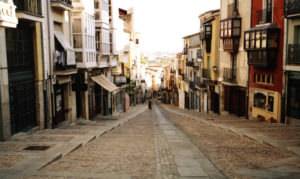
Visitors may see Zamora in a different way on this route.
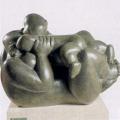 Baltasar Lobo – Castillo Centro de Arte. The works of this artist from Cerecinos de Campos may be seen in the castle gardens, on the Liza route and on the one known as the Casa de los Gigantes (House of Giants). It is a unique setting for 73 pieces by Baltasar Lobo. Occupying two floors, the Baltasar Lobo Art Centre gathers an important part of the works that were given at the time to the city, including drawings, photographs, work tools and more than 50 works that the Zamoran sculptor created during his lifetime.
Baltasar Lobo – Castillo Centro de Arte. The works of this artist from Cerecinos de Campos may be seen in the castle gardens, on the Liza route and on the one known as the Casa de los Gigantes (House of Giants). It is a unique setting for 73 pieces by Baltasar Lobo. Occupying two floors, the Baltasar Lobo Art Centre gathers an important part of the works that were given at the time to the city, including drawings, photographs, work tools and more than 50 works that the Zamoran sculptor created during his lifetime.
Born in Cerecinos de Campos on 22 February 1910, Baltasar Lobo is one of Spain’s most notable 20th century sculptors. His training began at the age of 12 when he went to work in an imagery workshop in Valladolid. He then studied in the Escuela de Bellas Artes and the Círculo de Bellas Artes in Madrid. During the Spanish Civil War he was exiled to France and received personal help from Picasso and Henry Laurens, from whom he adopted an interest in the curved line, characterizing all his work. He lived and worked there until his death in Paris in 1993.
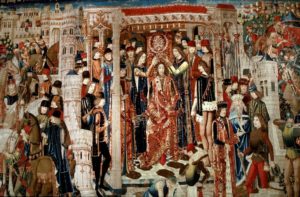 The Cathedral Museum. This museum was inaugurated in 1926 in order to house and exhibit works from the museum itself as well as from other diocese parishes. The museum underwent important remodelling for the celebration of The Ages of Man in 2001. The visit to the museum and Cathedral is made jointly since 2005. It houses collections such as the Image of the Virgin and Child and Saint John, in marble, attributed to Ordóñez. There are also panels by Fernando Gallego and Rafaelesque coppers and copies.
The Cathedral Museum. This museum was inaugurated in 1926 in order to house and exhibit works from the museum itself as well as from other diocese parishes. The museum underwent important remodelling for the celebration of The Ages of Man in 2001. The visit to the museum and Cathedral is made jointly since 2005. It houses collections such as the Image of the Virgin and Child and Saint John, in marble, attributed to Ordóñez. There are also panels by Fernando Gallego and Rafaelesque coppers and copies.
The main attraction of the museum is the collection of 15th and 16th century Franco-Flemish tapestries, of around twenty pieces. It includes the series La Viña and the Story of Alexander (both by Arras, dating from the 15th century); four of the original eleven of another series on the Trojan war embroidered in Tournai around 1470, donated to the Cathedral of Zamora in 1608 by the sixth Count of Alba and Aliste; and the five of the original eight tapestries of the Hannibal series, done in Brussels around 1570. Notable is the Tarquino Prisco tapestry, from the Tournai workshops in the last third of the 15th century and one of the most important works of its kind in the world.
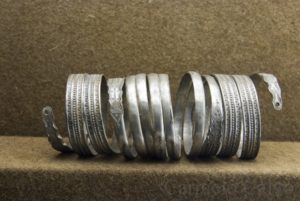 The Museum of Zamora is composed of two parts, Archaeology and Fine Arts. The first was dedicated to the history of the province, from the Palaeolithic era to the Modern Age. The second holds artistic collections, primarily sculpture and pictorial, from the 14th to 20th centuries. An exposition of significant elements of the historical evolution of the city of Zamora completes the tour.
The Museum of Zamora is composed of two parts, Archaeology and Fine Arts. The first was dedicated to the history of the province, from the Palaeolithic era to the Modern Age. The second holds artistic collections, primarily sculpture and pictorial, from the 14th to 20th centuries. An exposition of significant elements of the historical evolution of the city of Zamora completes the tour.
The Museum of Zamora was created based on the confiscation of Church property during the past century. Its first collections would consequently be paintings from province monasteries that had been dissolved.
Symbolically inaugurated by King Alfonso XII in 1877, it would not be open to the public until 1911, when it moved from the church of the Convent de las Marinas. Its demolition in 1975 forced the museum to stagnate, with its collections stored in a makeshift warehouse in the church Hospital de la Encarnación.
It has an Archaeology section, a Fine Arts section and a room called Sala de la Ciudad, where the history of the capital is told through architecture, shields, cast iron weather vanes and photographs.
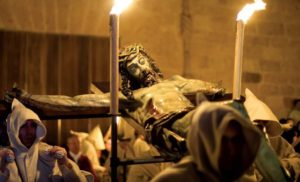 The Holy Week Museum has become an important element over the years for understanding this religious occasion since it allows the visitor not only to see the emotions of the rituals presented in images, but also to relive them.
The Holy Week Museum has become an important element over the years for understanding this religious occasion since it allows the visitor not only to see the emotions of the rituals presented in images, but also to relive them.
It goes beyond simple religious sentiment, having been created by the Pro-Holy Week Council in the 1960s to respond to an unavoidable need for a place to preserve and exhibit works of religious imagery.
Exhibited inside are most of the sculpture groups that take part in the 37 different processions, as well as the tunics and habits of the different brotherhoods. It is worth noting the works of Zamoran imagery artist Ramón Álvarez and those of Valencian sculptor Mariano Benlliure.
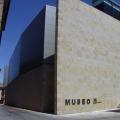 The Ethnology Museum of Castilla y León would like to help visitors reflect on aspects that pertain to individuals, to their coexistence with others and their ability to face problems in their environment. The Ethnology Museum of Castilla y León arises from the need, encouraged by the Regional Government of Castilla y León, to create a dynamic centre that welcomes the enormous and varied popular heritage of the Community, at the same time serving to centralize the study and diffusion of the scientific disciplines related to this ethnographic legacy.
The Ethnology Museum of Castilla y León would like to help visitors reflect on aspects that pertain to individuals, to their coexistence with others and their ability to face problems in their environment. The Ethnology Museum of Castilla y León arises from the need, encouraged by the Regional Government of Castilla y León, to create a dynamic centre that welcomes the enormous and varied popular heritage of the Community, at the same time serving to centralize the study and diffusion of the scientific disciplines related to this ethnographic legacy.
With the same intention in mind, Caja España offers a rich collection of 10,000 pieces. The City Council of Zamora and the City Hall of Zamora, a city in which the Council created a building for this purpose, immediately responded to the original proposal. It is currently integrated into the Regional Network of Museums.
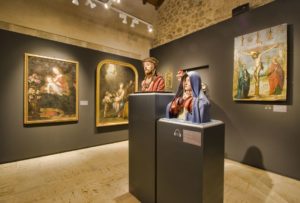 The Diocesan Museum of Zamora, inaugurated in July of 2012, is located in the Romanesque church of Santo Tomé. In it, the Diocese of Zamora spreads the most important part of the Catholic faith through the permanent and temporary expositions of outstanding works of Christian art. The building contains two beautiful early 12th century capitals that represent the Adoration of the Shepherds and the Adoration of the Magi.
The Diocesan Museum of Zamora, inaugurated in July of 2012, is located in the Romanesque church of Santo Tomé. In it, the Diocese of Zamora spreads the most important part of the Catholic faith through the permanent and temporary expositions of outstanding works of Christian art. The building contains two beautiful early 12th century capitals that represent the Adoration of the Shepherds and the Adoration of the Magi.
The Diocesan Museum of Zamora offers audio guides that are available in Spanish, English and Portuguese to explain some of the works of art, as well as publications and products related to their content.
